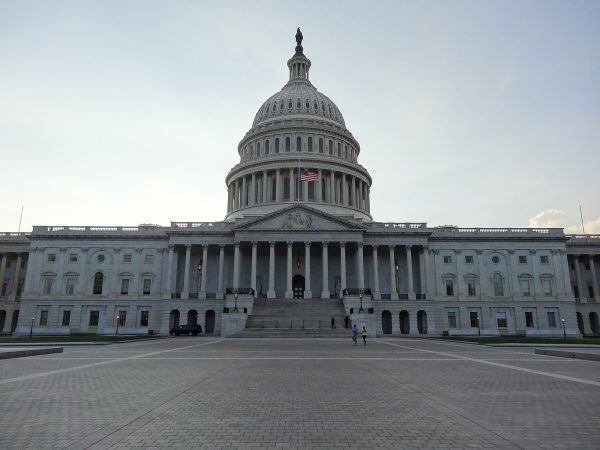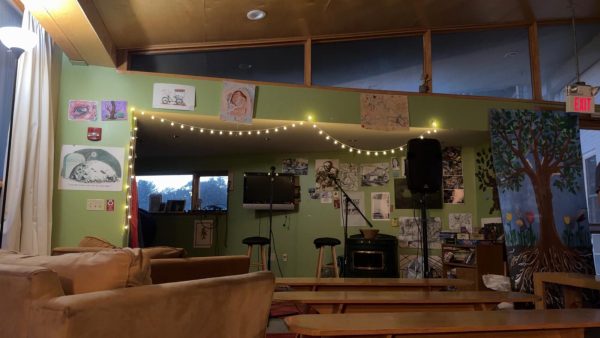Potter Lecture Shows Geophysical Images of Yellowstone
The 14th annual Potter Lecture was given by Geophysics Professor Dr. W. Steven Holbrook of Virginia Polytechnic Institute & State University in the Stafford Auditorium, which was over capacity with students and faculty.
According to Chair of the Earth Sciences Department, Professor Marcus Key Jr., “the annual Potter Lecture is an opportunity for our students to meet and engage established scientists and to have discussions about their research, career paths, graduate school and career opportunities beyond the limestone walls.”
Holbrook’s presentation, titled “What’s Under Old Faithful? New Geophysical Images of Yellowstone’s Hydrothermal Systems,” focused on the first few hundred meters below Yellowstone National Park. The talk addressed his work studying the plumbing system beneath hot springs and geysers, what controls the locations of hydrothermal features and whether hydrothermal areas are isolated or connected.
His research team collected data from both obsidian pool thermal areas and upper-midway-lower geyser basins. By using a transmitter to run a current underground, the team created a magnetic field going down into the Earth. If there was a conductive body there, it would generate electrical currents that would produce a secondary magnetic field that the receiver would pick up. With this information, the team could figure out the location, shape and electrical conductivity of the electrical conductor underground.
To answer the headlining question, “What happens under Old Faithful?,” Holbrook explained that geophysical techniques show “pathways where the hydrothermal fluid has moved through, so, when these hot fluids move through the sub-surface and ultimately come out of something like Old Faithful, they change the sub-surface. They…create clay, they increase the porosity and that creates a physical property contrast so that you could spot them through electrical resistivity. We’re mapping that out in these 3-D volumes and showing where the hydrothermal fluids are or have been and how they’re focusing up to come out in these vents that they’re emitting through.”
Holbrook also mentioned that with increasing depth, hydrothermal flow paths merged into a large body with fairly sharp edges. When the edges are compared to the location of the faults, the faults clearly control the border where the hydrothermals are. This means that deep hydrothermal flow paths appear to be compartmentalized by faulting, then focused by lava flow boundaries.
When asked about how he got involved in this project, Holbrook said, “I’d been [to Yellowstone] several times as a tourist and started talking more seriously about it with one of my colleagues at the University of Wyoming… He’s been doing some work there and we realized that the geophysical techniques that I used would probably be a really good way to figure out where these pathways are on the subsurface, so we just gradually started testing it out and it just grew from there.”
Billy Irving ’19 enjoyed the lecture.
“Dr. Steven Holbrook did an excellent job explaining the questions that originally spurred his research, the methods he used to collect data and the results he drew from that data. I have always wanted to visit Yellowstone National Park and I am very interested in volcanoes as an earth sciences major, but I never knew the physics controlling Yellowstone were so fascinating,” he explained.”I also appreciate Dr. Jorden Hayes introducing him as a speaker and I think it’s so cool that she was his student. The research Dr. Holbrook conduced makes me feel excited about all the things I could achieve with a degree in earth sciences!”
“As a student, it’s always useful to hear about many different kinds of work being done in our broader field and how researchers on the forefront are approaching new questions and revisiting old hypotheses,” said Allison Curley ’19. “I’ve always wanted to go to Yellowstone, but even more so.”
This year’s Potter Lecture took place on Monday, March 26.




